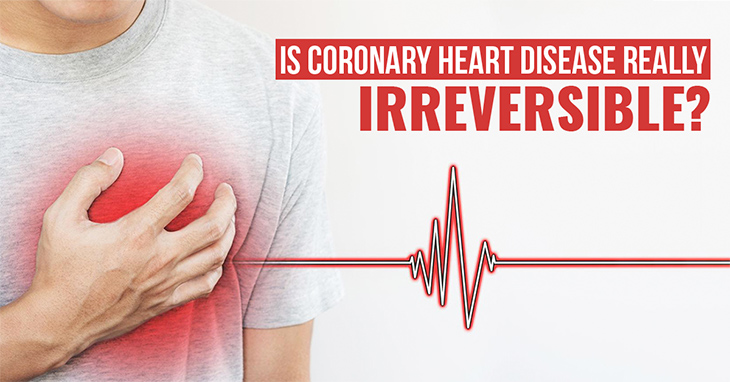Hope for Those with Coronary Artery Disease
Category: Healthy Heart

Imagine the vascular system as your body’s plumbing. The heart is the pump, the arteries and veins are the pipes, and the blood is the water that flows through the entire system.
Over time, fat, cholesterol, calcium, and other substances found in your blood build up as plaque and stick to the arterial walls, much like how grease and other contaminants build up in your home’s piping system.
As the plaque grows, your arteries narrow and harden, restricting the amount of blood that flows through them, which leads to your heart muscle not getting the oxygen it needs to function properly.
This reduction of blood flow to your heart is known as coronary heart disease (CHD), coronary artery disease (CAD), or ischemic heart disease (IHD).
This condition remains the leading cause of death in the U.S. in both men and women and is the most common type of heart disease.

Symptoms of CHD may include:
– Chest pain
– Shortness of breath
– Heart palpitations
– Heart attacks
This is where some people get confused. Many are not aware that heart attacks are just a manifestation of the underlying problem that is CHD.
Most heart attacks happen when a blood clot suddenly cuts off the hearts’ blood supply, causing permanent heart damage.
Risk factors include:
– Smoking
– High LDL cholesterol
– Low HDL cholesterol
– High blood pressure (hypertension)
– Family history
– Diabetes
– Obesity
– Physical inactivity
– Being post-menopausal for women
– Being older than 45 for men
Is There a Way to Reverse CHD?

Unfortunately, much like diabetes, CHD has no known cure at this time. There are some anecdotal evidence of people who undergo lifestyle changes that enabled them to abandon all medication and become symptom free, but there are no actual studies of arteries getting cleared of plaque buildup.
The good news is, there are medical treatments available that can alleviate the symptoms and reduce the risk of further problems, including those that lower blood pressure or widen the arteries. Good dietary and lifestyle habits can also help manage this condition, and if you start early, even prevent it altogether.
Here are 4 proven ways you can lower your risk of CHD:
1. Eating a healthy, balanced diet
A low-fat, high-fiber diet is recommended, which should include plenty of fresh fruit and vegetables and whole grains.
Limiting the amount of salt you eat is recommended, as too much salt will increase your blood pressure.
There are two types of fat: saturated and unsaturated. Try to avoid food containing saturated fats because these will increase the levels of bad cholesterol in your blood.
2. Being more physically active
Combining a healthy diet with resistance or aerobic exercise is the best way to maintain a healthy weight, which reduces your chances of developing high blood pressure.
Regular exercise will not only make your circulatory system more efficient but will also lower your cholesterol level.
3. Giving up smoking and reducing alcohol consumption
According to the 2014 Surgeon General’s Report, one out of every four deaths from cardiovascular disease is caused by smoking.
Smoking increases the formation of plaque in blood vessels. Chemicals in cigarette smoke cause the blood to thicken and form clots inside veins and arteries.
Alcohol, on the other hand, can interact with your medicines if you’re being treated for heart disease. It may also contribute to high blood pressure, increase your risk of stroke, and cause abnormal heart rhythms (arrythmia).
4. Keeping blood pressure under control
People with hypertension are more likely to develop CHD because high blood pressure puts added force against the artery walls.
This extra pressure can damage the arteries, making them more vulnerable to the narrowing and plaque buildup associated with atherosclerosis.
You can keep your blood pressure under control by eating a healthy diet, exercising regularly and, if required, taking the appropriate medication to lower your blood pressure.
If you have one or more of the risk factors associated with CHD, talk to your doctor. He or she may want to test you for the condition, especially if you have signs or symptoms of narrowed arteries.
Here’s to keeping your arteries clog-free!
For more information, please don’t hesitate to contact me at Jerry@Fit4LifeLLC.com.



Facebook Comments